Embark on an extraordinary adventure as we delve into the realm of scuba diving locations, where crystal-clear waters beckon you to witness the vibrant tapestry of marine life. From coral reefs teeming with biodiversity to underwater caves revealing hidden wonders, this comprehensive guide will illuminate the most captivating destinations for your next aquatic escapade.
Prepare to be mesmerized by the kaleidoscope of colors, fascinating creatures, and awe-inspiring underwater landscapes that await your exploration. Let us guide you through the intricacies of scuba diving, ensuring a safe and unforgettable experience that will leave an enduring imprint on your soul.
Popular Scuba Diving Destinations
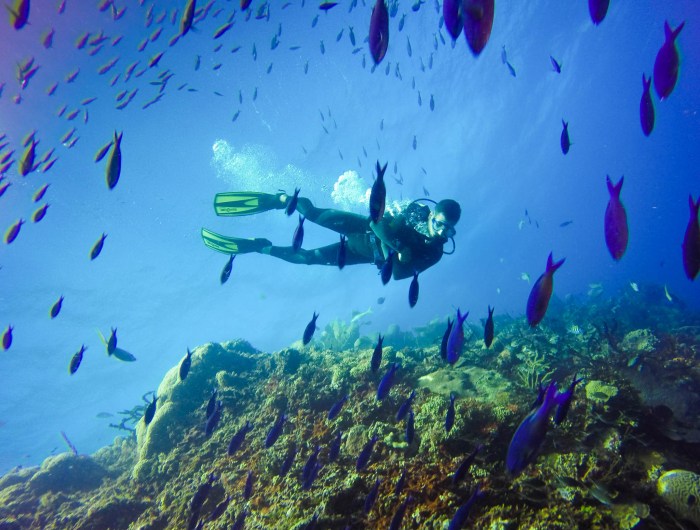
Scuba diving offers a unique opportunity to explore the underwater world and encounter a diverse range of marine life. Various destinations around the globe provide exceptional scuba diving experiences, each with its own distinct features and attractions.
The best time to visit a scuba diving destination depends on factors such as weather conditions, visibility, water temperature, and the availability of marine life. Some destinations offer year-round diving, while others have specific seasons that are more favorable.
The Great Barrier Reef, Australia
The Great Barrier Reef is one of the most renowned scuba diving destinations in the world. This vast coral reef system is home to an incredible array of marine life, including over 1,500 species of fish, 400 types of coral, and numerous other marine organisms. The reef offers a wide range of dive sites, from shallow coral gardens to deep walls and drop-offs.
The Red Sea, Egypt
The Red Sea is another popular scuba diving destination, known for its crystal-clear waters, vibrant coral reefs, and diverse marine life. The region offers a variety of dive sites, including wrecks, reefs, and walls. Some of the most popular dive sites in the Red Sea include the SS Thistlegorm, a World War II shipwreck, and the Ras Mohammed National Park, which is home to a wide range of marine life.
The Maldives
The Maldives is a chain of islands in the Indian Ocean that is known for its stunning beaches, crystal-clear waters, and world-class scuba diving. The Maldives offers a variety of dive sites, including coral reefs, atolls, and underwater caves. Some of the most popular dive sites in the Maldives include the Manta Point, which is known for its manta ray sightings, and the Banana Reef, which is home to a variety of marine life.
Cozumel, Mexico
Cozumel is an island off the coast of Mexico that is known for its world-class scuba diving. The island offers a variety of dive sites, including coral reefs, walls, and wrecks. Some of the most popular dive sites in Cozumel include the Palancar Reef, which is known for its vibrant coral formations, and the Santa Rosa Wall, which is a deep wall that is home to a variety of marine life.
Galapagos Islands, Ecuador
The Galapagos Islands are a chain of islands in the Pacific Ocean that are known for their unique wildlife and stunning scenery. The islands offer a variety of dive sites, including lava formations, underwater caves, and coral reefs. Some of the most popular dive sites in the Galapagos Islands include the Wolf Island, which is known for its large populations of sharks and rays, and the Darwin Island, which is home to a variety of marine life, including sea lions, penguins, and marine iguanas.
Types of Scuba Diving Sites

The underwater world offers a diverse array of scuba diving sites, each with unique characteristics and experiences to offer. From vibrant coral reefs teeming with marine life to sunken wrecks and mysterious caves, the options are endless. Understanding the different types of sites can help divers choose the ones that best suit their interests and skill levels.
Coral Reefs
Coral reefs are underwater ecosystems composed of colonies of tiny animals called coral polyps. They are renowned for their vibrant colors, diverse marine life, and complex structures. Coral reefs provide shelter, food, and breeding grounds for a wide range of species, making them hotspots for biodiversity. Notable coral reef diving sites include the Great Barrier Reef in Australia, the Raja Ampat Islands in Indonesia, and the Mesoamerican Barrier Reef in Belize.
Wrecks
Wrecks are the remains of sunken ships, aircraft, or other structures. They offer a glimpse into maritime history and provide unique diving experiences. Wrecks can be found in various states of preservation, from intact vessels to scattered debris. Exploring wrecks requires special training and precautions due to potential hazards. Some notable wreck diving sites include the SS Thistlegorm in the Red Sea, the USS Arizona in Pearl Harbor, and the RMS Titanic in the North Atlantic.
Caves
Underwater caves are natural or man-made cavities that extend beneath the water’s surface. They offer a mysterious and challenging diving experience, requiring specialized equipment and training. Caves can be complex and maze-like, with narrow passages, tight restrictions, and limited visibility. Notable cave diving sites include the Great Blue Hole in Belize, the Cenotes of Mexico, and the Kilsby Caves in Australia.
The world’s oceans are home to a vast array of scuba diving locations, each offering unique experiences for divers of all levels. From the vibrant coral reefs of the Caribbean to the mysterious underwater caverns of Mexico, there are countless destinations to explore.
For those seeking adventure, scuba diving locations offer an unforgettable opportunity to witness the beauty and diversity of the underwater world firsthand.
Underwater Walls
Underwater walls are vertical or near-vertical rock faces that drop sharply into the depths. They are often formed by tectonic activity or erosion. Underwater walls offer dramatic scenery and attract a variety of marine life. Divers can explore the wall from top to bottom, encountering different species and habitats along the way. Notable underwater wall diving sites include the Great Wall of China in the Bahamas, the Bloody Bay Wall in Jamaica, and the Ningaloo Reef in Australia.
Marine Life Encounters
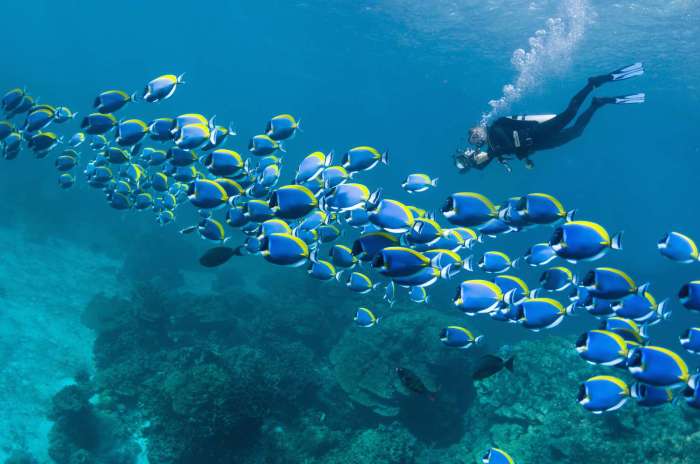
The underwater world is teeming with an astounding diversity of marine life, offering divers an unparalleled opportunity to witness the wonders of nature firsthand. From vibrant coral reefs to deep-sea trenches, each scuba diving location boasts its unique array of marine species, creating a kaleidoscope of colors, shapes, and behaviors.
The tropical waters of the Caribbean and Southeast Asia are renowned for their vibrant coral reefs, home to a dazzling array of fish species. Schools of colorful parrotfish, angelfish, and butterflyfish dart among the intricate coral formations, while larger predators such as sharks and rays cruise the deeper waters. The Great Barrier Reef in Australia is the world’s largest coral reef system, supporting an estimated 1,500 species of fish and over 400 species of coral.
The cold, nutrient-rich waters of the Pacific Ocean off the coast of California and British Columbia are a haven for marine mammals. Divers can encounter playful sea otters, curious harbor seals, and majestic gray whales during their annual migration. The Monterey Bay Aquarium in California is home to a diverse collection of marine life, including jellyfish, sea turtles, and the largest single-celled organism on Earth, the giant squid.
While scuba diving locations often require significant expenses, budget family vacations can still make these underwater adventures a reality. Budget family vacations can help families find affordable accommodations, transportation, and activities that won’t break the bank. With careful planning, families can explore the wonders of the underwater world without sacrificing their financial well-being.
The deep-sea environment, accessible only to experienced technical divers, is home to a fascinating array of creatures adapted to the extreme conditions of darkness, cold, and high pressure. Bioluminescent jellyfish, anglerfish, and deep-sea sharks are just a few of the unique species that inhabit these enigmatic depths.
Conservation Status
While scuba diving provides a unique opportunity to appreciate the wonders of the underwater world, it is crucial to remember that marine ecosystems are fragile and face numerous threats, including overfishing, pollution, and climate change. Divers play a vital role in protecting marine life by adhering to responsible diving practices, minimizing their impact on the environment, and supporting conservation efforts.
For those seeking thrilling underwater adventures, exploring the vibrant coral reefs and diverse marine life at renowned scuba diving locations is a must. However, for families seeking a balance between adventure and relaxation, family-friendly resorts offer the perfect solution. These resorts often feature dedicated kids’ clubs, supervised activities, and shallow pools, allowing parents to indulge in scuba diving excursions while their little ones are well cared for.
Upon returning from these exhilarating dives, families can reunite and share their underwater experiences, creating lasting memories in a tropical paradise.
Safety Considerations
Scuba diving is an exhilarating activity that allows us to explore the underwater world. However, it’s crucial to prioritize safety to ensure an enjoyable and incident-free experience. Scuba diving involves inherent risks, and adhering to safety protocols and procedures is paramount.
Before embarking on a dive, divers must undergo proper training and certification. This training covers essential skills, knowledge, and emergency procedures, equipping divers with the competence to handle potential underwater situations.
Pre-Dive Planning
Thorough planning is vital before any dive. Divers should:
- Check weather conditions and dive site suitability.
- Inform a dive buddy or responsible person of their dive plans and expected return time.
- Ensure proper equipment function and redundancy (e.g., backup air source).
- Familiarize themselves with the dive site and potential hazards.
During the Dive
While underwater, divers must remain vigilant and adhere to safety guidelines:
- Stay within their training and experience limits.
- Maintain neutral buoyancy and avoid rapid ascents or descents.
- Monitor air consumption and surface with ample gas supply.
- Communicate effectively with their dive buddy.
- Be aware of potential hazards, such as currents, marine life, and overhead environments.
Emergency Procedures
Divers should be prepared to handle emergencies underwater. Training and practice are crucial for:
- Equipment failure (e.g., regulator malfunction).
- Lost or separated dive buddy.
- Rapid ascent (e.g., emergency ascent from depth).
- Decompression sickness (e.g., decompression stop violation).
Post-Dive Considerations
After a dive, divers should:
- Hydrate adequately to replenish fluids lost during the dive.
- Monitor for signs of decompression sickness.
- Rest and avoid strenuous activity to allow the body to recover.
- Log their dive for future reference and analysis.
By following these safety considerations, scuba divers can minimize risks and enhance their diving experience. Remember, safety is not just a rule; it’s a mindset that ensures every dive is an enjoyable and memorable one.
Diving Equipment and Technology

Scuba diving equipment and technology play a crucial role in ensuring the safety and enjoyment of divers. Over the years, advancements in dive gear have revolutionized the diving experience, making it more accessible and enjoyable for people of all skill levels.
Essential Scuba Diving Equipment
The essential scuba diving equipment includes:
- Regulator: Controls the flow of compressed air from the scuba tank to the diver’s mouthpiece.
- Buoyancy Compensator (BCD): A vest-like device that helps divers control their buoyancy underwater.
- Dive Computer: A wrist-mounted device that provides information such as depth, dive time, and ascent rate.
- Mask: Provides clear underwater vision.
- Fins: Propels divers through the water.
- Wetsuit or Drysuit: Protects divers from cold water temperatures.
Advanced Diving Technology
In addition to essential equipment, advanced diving technology has emerged to enhance the diving experience:
- Rebreathers: Closed-circuit diving systems that recycle exhaled air, reducing bubble noise and extending dive time.
- Sidemount Diving: A configuration where scuba tanks are mounted on the diver’s sides instead of on the back.
- Underwater Scooters: Propulsion devices that allow divers to cover greater distances underwater.
- Surface Marker Buoys (SMBs): Inflatable devices that mark a diver’s location on the surface.
These advancements have not only improved diver safety but also opened up new possibilities for underwater exploration and adventure.
Underwater Photography and Videography: Scuba Diving Locations
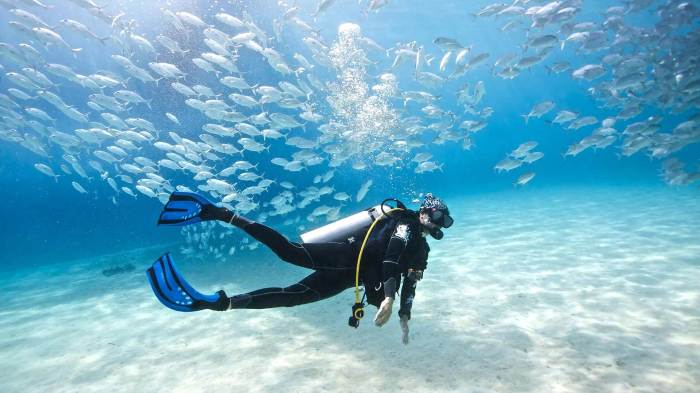
Underwater photography and videography capture the breathtaking beauty and diversity of the marine world. With the right techniques and equipment, you can preserve these moments and share them with others.
Techniques and Equipment
Capturing stunning underwater images requires specialized techniques and equipment:
- Camera Housing: Protects your camera from water and pressure.
- Underwater Lenses: Wide-angle, macro, and fisheye lenses are commonly used for underwater photography.
- Strobes: Provide additional lighting to compensate for the absorption of light underwater.
- Camera Settings: Adjust shutter speed, aperture, and ISO to optimize image quality.
Tips and Tricks
Follow these tips for taking great underwater photos and videos:
- Use Natural Light: Position yourself to maximize natural sunlight.
- Get Close: Approach subjects to capture detailed images.
- Control Buoyancy: Maintain neutral buoyancy to avoid disturbing marine life.
- Shoot in RAW: Capture more image data for post-processing flexibility.
Respecting Marine Life and the Environment
It’s crucial to respect marine life and the environment while engaging in underwater photography:
- Avoid Harassment: Do not chase or disturb marine animals.
- Use Reef-Safe Sunscreen: Protect coral reefs from harmful chemicals.
- Remove Your Litter: Dispose of trash properly to keep the ocean clean.
Dive Training and Certification
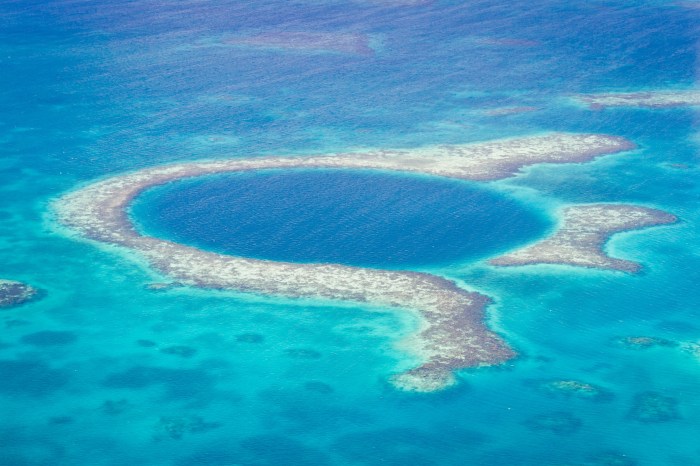
Obtaining proper training and certification is crucial for safe and enjoyable scuba diving. Different levels of certification exist, each requiring specific training to ensure divers possess the knowledge and skills necessary for various diving conditions.
Certification Levels
Scuba diving certification levels typically range from beginner to advanced, with each level building upon the previous one. Some of the common certification levels include:
- Open Water Diver: Entry-level certification for recreational divers, covering basic scuba diving principles and skills.
- Advanced Open Water Diver: Advanced certification for divers seeking to expand their knowledge and skills in specific diving environments, such as deep diving or wreck diving.
- Rescue Diver: Certification for divers trained in emergency response and rescue techniques.
- Divemaster: Professional-level certification for individuals assisting with guided dives and supervising student divers.
- Instructor: Certification for individuals qualified to teach scuba diving courses.
Importance of Training and Certification, Scuba diving locations
Proper training and certification are essential for safe and enjoyable scuba diving. They provide divers with:
- Comprehensive knowledge of diving principles, techniques, and safety procedures.
- Practical skills to handle various diving situations, including emergency scenarios.
- Confidence and competence in underwater environments.
- Recognition and acceptance by dive operators and other divers worldwide.
Reputable Dive Training Organizations
Several reputable dive training organizations offer certification programs. Some of the most well-known organizations include:
- Professional Association of Diving Instructors (PADI)
- Scuba Schools International (SSI)
- National Association of Underwater Instructors (NAUI)
- Confederation Mondiale des Activites Subaquatiques (CMAS)
These organizations adhere to strict standards and guidelines to ensure the quality and consistency of their training programs.
Environmental Conservation

Protecting and preserving marine ecosystems is crucial for their long-term health and sustainability. Scuba divers play a vital role in conservation efforts by observing and reporting environmental changes, supporting research, and advocating for responsible diving practices.
Threats to marine environments include pollution, overfishing, climate change, and habitat destruction. Scuba divers can help mitigate these threats by:
Responsible Diving Practices
- Avoiding touching or disturbing marine life.
- Using biodegradable sunscreen and avoiding plastic products.
- Practicing buoyancy control to prevent damage to coral reefs.
Conservation Initiatives
- Participating in citizen science projects to monitor marine health.
- Supporting organizations dedicated to marine conservation.
- Educating others about the importance of marine ecosystems.
Success Stories
Conservation initiatives have led to significant improvements in marine environments. For example, the establishment of marine protected areas has helped restore fish populations and coral reefs.
By embracing their role as environmental stewards, scuba divers can contribute to the protection and preservation of these invaluable ecosystems for future generations.
Last Recap
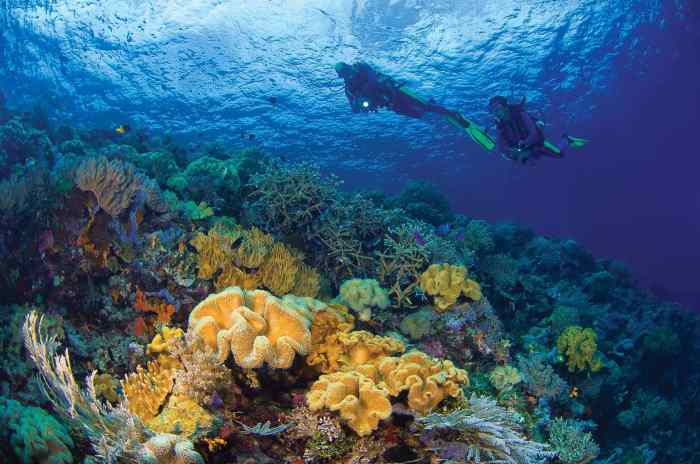
As you emerge from the depths, you will carry with you not only memories of breathtaking encounters but also a profound appreciation for the fragility and beauty of our oceans. Let this guide serve as your constant companion, empowering you to discover the wonders that lie beneath the surface and inspire you to become an advocate for their preservation.
Q&A
What are the most popular scuba diving destinations worldwide?
The most popular scuba diving destinations include the Great Barrier Reef in Australia, the Red Sea in Egypt, the Maldives, the Galapagos Islands, and the Caribbean Sea.
What are the different types of scuba diving sites?
The different types of scuba diving sites include coral reefs, wrecks, caves, underwater walls, and kelp forests.
What is the best time to visit scuba diving locations?
The best time to visit scuba diving locations varies depending on the destination. However, generally speaking, the best time to dive is during the shoulder seasons (April-May and September-October) when the weather is mild and the water is clear.